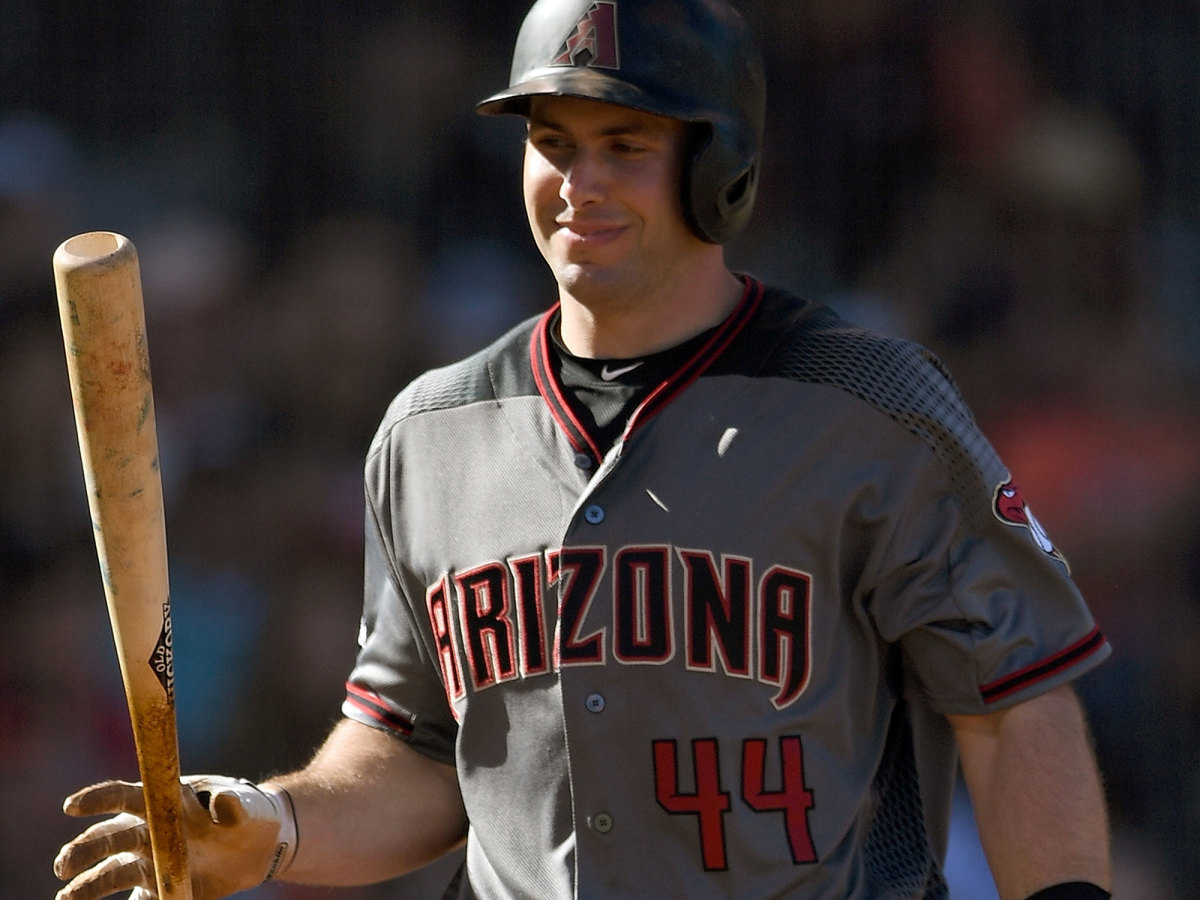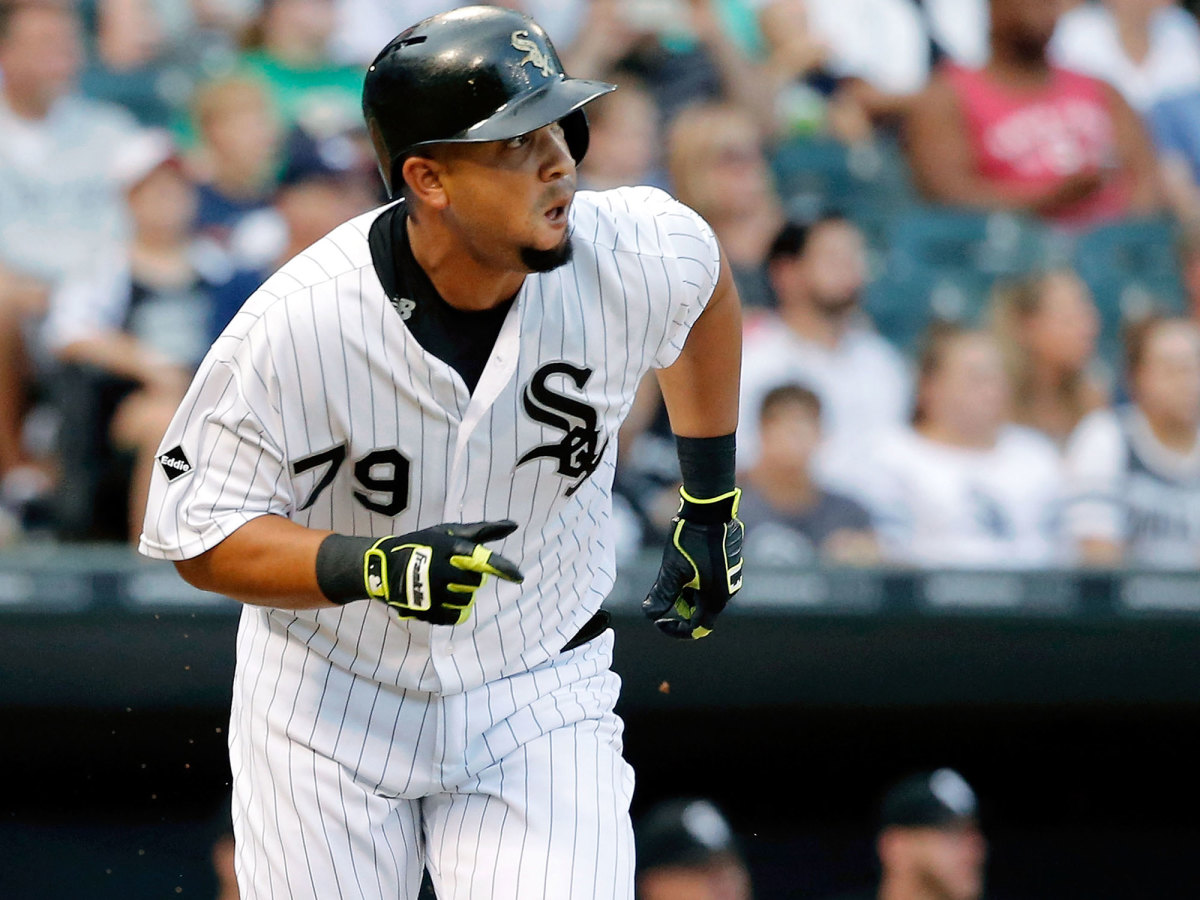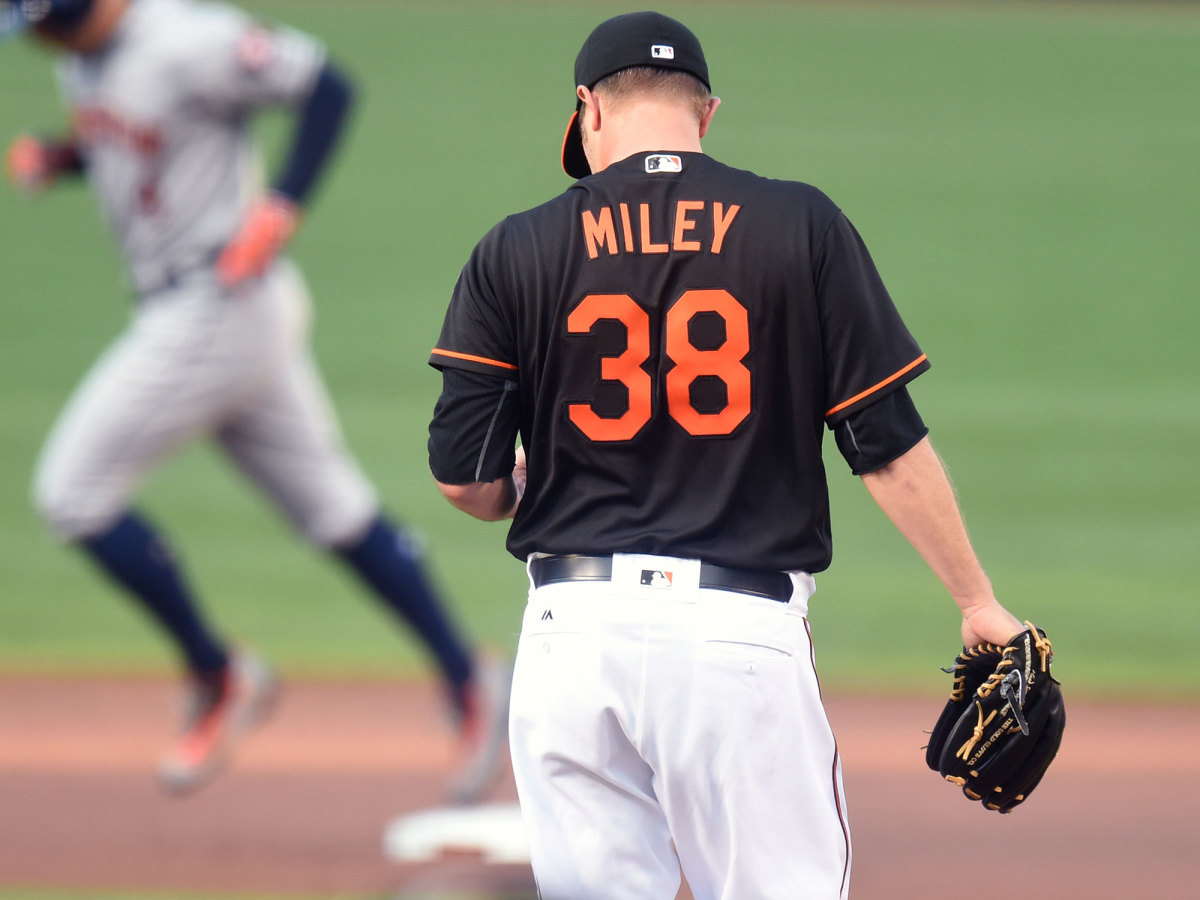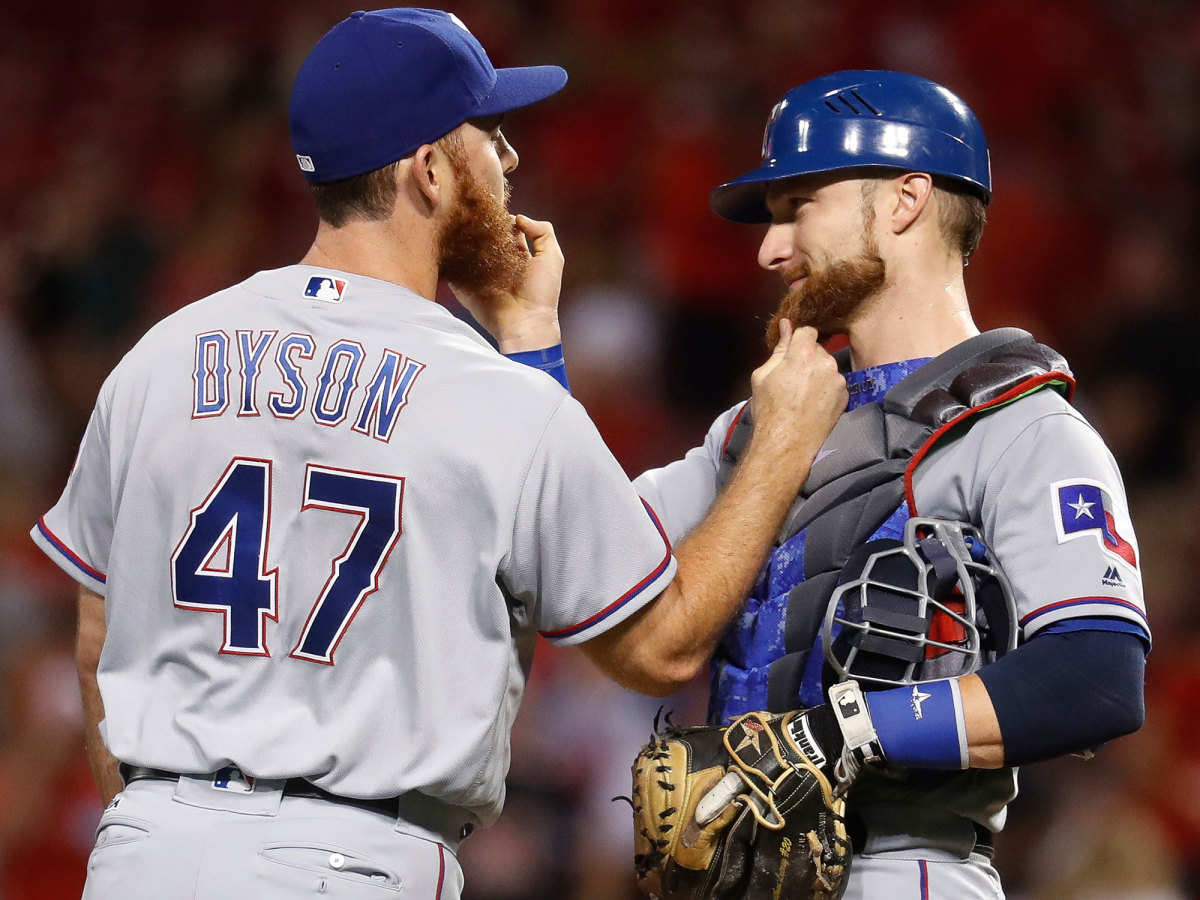The 30: Trust the process in this week's MLB power rankings

Trust the process. It’s a phrase that’s gained lots of traction in sports over the past few years. If a team’s making smart moves, the theory goes, then over the long haul those moves should eventually lead to strong results for that team and the players it’s acquired.
The problem is, trusting the process is often easier said than done. For one thing, even acquisitions that look shrewd at the time they’re made can fizzle out badly. More troubling is when a team touts its process as one that’s grounded into sound thinking when in fact it’s fatally flawed from the start, damaging the ballclub both now and in the future.
Three of this week’s four featured teams have suffered some recent disappointment despite seemingly logical approaches to roster-building. The White Sox spent the past two winters trying to address the weak spots on their roster but remain largely a stars-and-scrubs team. The Orioles have tried to get by with power hitting and a great bullpen, but a thin starting rotation might be their undoing. The Rangers retain a commanding lead in the AL West, but two of their three biggest trade deadline acquisitions have been busts so far. As for the Diamondbacks, their process and their results stink, and deeper questions linger over the future of their franchise.
The best-laid plans of mice and men often go awry. It’s Week 21 of The 30.
Best Example of Knowing Your Place: Bryce Harper
After a torrid start to the season, Bryce Harper hasn’t been able to duplicate last year’s Ted Williams-like pace. Still, Harper remains one of the best players in the game, a young star whose best days might still be ahead of him, and a leading light for one of the best teams in baseball.
He also knows his place. When Olympic swimmer Katie Ledecky visited Nationals Park on Wednesday to throw out the ceremonial first pitch, Harper was severely outgunned. So he served as Ledecky’s personal valet, holding two fistfuls of medals as the five-time gold medalist fired a perfect strike.
#https://www.instagram.com/p/BJgxnIxAoGb/

Snakebitten
Bad luck has hurt the last-place Diamondbacks this season, but lousy management could have a longer-lasting impact.
30. Atlanta Braves (48–83 record, minus-164 run differential, last week: 30)
29. Minnesota Twins (49–81, minus-123, LW: 29)
28. Arizona Diamondbacks (55–76, minus-135, LW: 28)
27. Milwaukee Brewers (56–74, minus-84, LW: 24)
26. Oakland A’s (57–73, minus-88, LW: 27)
25. Cincinnati Reds (55–74, minus-111, LW: 23)
24. San Diego Padres (55–75, minus-65, LW: 25)
23. Los Angeles Angels (56–74, minus-35, LW: 26)
22. Tampa Bay Rays (55-74, minus-16, LW: 22)
One of the costliest injuries suffered by any team this season occurred back on April 1, when Diamondbacks centerfielder A.J. Pollock fractured his right elbow. That injury knocked him out for nearly five months, taking a 2015 All-Star and Gold Glover who was one of the best players in the National League last season off of Arizona’s roster from day one.
Pollock finally returned to Arizona’s lineup on Friday. Given how good a player he can be and how weak his replacements have been in the outfield, you could argue that the D-Backs lost something like five wins in his absence. Add those five wins to their ledger, though, and they’re still one of the worst teams in the league. As much as the Pollock injury and an assortment of either ailments have hurt, there’s a simpler explanation for Arizona’s woes: Management built a lousy ballclub—one that’s unlikely to get much better next season and is in danger of being awful for years to come thanks to a series of short-sighted moves.
Amid another lost season, will Diamondbacks shake things up again?
The Shelby Miller trade was the most damning recent transaction. The deal looked awful at the time, with Ender Inciarte—arguably the least impressive player of the three the Braves acquired—outflanking Miller last season by Wins Above Replacement all by himself. What’s happened since then—2015 No. 1 pick Dansby Swanson zooming all the way to the big leagues to become Atlanta’s starting shortstop and a completely messed up Miller pitching so poorly that he’s now mired in the minors—has only made it worse.
That trade and the $206.5 million boondoggle contract given to Zack Greinke—one that lasts until his late-30s and is almost certainly not going to be worth the money—are merely the highest-profile moves during the recent reign of error by chief baseball officer Tony La Russa and general manager Dave Stewart. ESPN’s Keith Law recently outlined the list of costly missteps pulled off by that ill-informed front office (and encouraged by feckless ownership), and it’s an ugly tale. Some of the other lowlights include:
• Paid $8 million to sign bust Cuban pitching prospect Yoan Lopez, then exacerbated the mistake by trading away top pitching prospect Touki Toussaint in a straight salary dump deal (also with the Braves).
• Chose to spend $1.7 million less than their total slot value allowed in the draft, at a time when other teams go to extraordinary lengths to spend as close to their cap as possible.
• Released righthander Will Harris and his excellent slider, then watched him blossom into one of the best relievers in the game with the Astros.
There’s lots more to dissect, and Law’s piece does so with surgical precision. He further argues that Stewart and La Russa are years behind in understanding analytical concepts or even basic player evaluation points and should be held accountable (read: fired) for their bungling. FOX Sports’ Ken Rosenthal goes a step further, arguing that Diamondbacks managing partner Ken Kendrick needs to shoulder much of the blame. Rosenthal notes some of the positive moves the team has made in the past couple years too, including the acquisitions of catcher Welington Castillo, lefty starter Robbie Ray and second baseman Jean Segura, as well as escaping Miguel Montero’s onerous contract. Still, the farm system is now so thin as a result of shaky drafting and international market moves, plus multiple trades of top prospects to other teams, that it’s hard to imagine perennial MVP candidate Paul Goldschmidt playing on a World Series contender at any point between now and the end of his incredibly affordable contract … and that’s despite the D-Backs controlling his rights through 2019.
Baseball is rife with sharp, creative minds in other front offices who would jump at the chance to win a GM job, even if it is for the franchise that could challenge for most losses by an NL team for the rest of this decade. For Diamondbacks fans’ sake, hopefully one of those highly qualified candidates takes the reins as soon as possible.

Stuck In Neutral
The White Sox are on their way to another forgettable season, despite the team’s aggressive efforts to improve.
21. Philadelphia Phillies (60–70, minus-138, LW: 21)
20. Colorado Rockies (62–68, plus-12, LW: 19)
19. Chicago White Sox (63–66, minus-31, LW: 20)
18. New York Mets (66–64, plus-2, LW: 18)
17. Miami Marlins (67–63, plus-11, LW: 12)
The White Sox bagged some modest improvement in 2014, spiking from 63 to 73 wins, with an impressive quartet of young stars leading the charge. On offense, Jose Abreu ran away with Rookie of the Year honors and finished fourth in MVP voting as the team’s new slugging first baseman, and Adam Eaton batted .300/.362/.401 and played strong defense as the team’s new centerfielder. On the pitching side, 25-year-olds Chris Sale and Jose Quintana asserted themselves as the best young duo of lefty starters in the league. Sure, the supporting cast stunk. But if the Pale Hose could fill some of their glaring weakness with even league-average players, a quick jump toward contention was possible.
GM Rick Hahn responded with force. In one of the most aggressive off-season sprees any team had pulled off in years, Hahn acquired righthander Jeff Samardzija, closer David Robertson, lefty setup reliever Zach Duke, outfielder Melky Cabrera and first baseman Adam Laroche to fill multiple gaping holes. None of those players were superstars at the time, but the jump from a replacement-level player to a league-average one can be as valuable to a team as a league-average player to a borderline All-Star. Build around the young corps and plug in a competent supporting cast, and the White Sox figured to make some noise in the AL Central.
Chicago didn’t. LaRoche and Samardzija flopped; Cabrera underachieved; the Sox got miserable production from catcher, second base, third base, shortstop and rightfield; and the supposedly much improved 2015 squad won just three more games than the ‘14 club did.
The Metrics System: How MLB's Statcast is creating baseball's new arms race
So Hahn tried again. Last off-season, he once more overhauled the roster, with a particular focus on Chicago's miserable infield. He signed Alex Avila and Dioner Navarro to try to improve the catcher position. He traded two B-level prospects for Brett Lawrie, addressing the need at second base, and a week later, he pulled off a three-way trade for All-Star Todd Frazier, reeling in a badly needed power-hitting third baseman.
That hasn’t worked either. Navarro played terribly and just got shipped back to Toronto. Avila and Lawrie have played competently when healthy, but both have missed significant time to injury. Frazier ranks among the league leaders in homers and RBIs but is also hovering just above the Mendoza line. Another off-season pickup, outfielder Austin Jackson, was a bust. And while Sale and Quintana continued to excel and fellow young lefty Carlos Rodon has shown flashes of potential, the bottom two spots in Chicago’s rotation have combined to rank among the worst in baseball. Combine those shortfalls with Abreu falling sharply from his world-beating level of two years, and the White Sox remain where they were two years: below .500 with a top-heavy roster that badly needs competence in supporting roles to be a real contender.
This winter, Chicago will hope that the third time’s the charm. Rookie shortstop Tim Anderson has impressed and figures to be the answer at that spot through the rest of the decade, and maybe longer. Rodon’s fastball-slider combo has the potential to give the White Sox a third dominant lefty starter. The farm is getting better thanks to some promising drafts. Maybe one more winter spree will finally vault the Sox above .500 or better. For a franchise that’s now been languishing for nearly a decade, Chicago can't afford another season of the same results.

Starter Kit
The already thin Orioles rotation is now even thinner, putting Baltimore’s playoff chances in doubt.
16. New York Yankees (67–62, minus-9, LW: 17)
15. Kansas City Royals (68–62, minus-18, LW: 16)
14. Pittsburgh Pirates (67–61, plus-13, LW: 15)
13. St. Louis Cardinals (68–61, plus-79, LW: 10)
12. Detroit Tigers (69–61, plus-18, LW: 13)
11. Seattle Mariners (68–62, plus-36, LW: 9)
10. Houston Astros (68–62, plus-42, LW: 14)
9. San Francisco Giants (71–59, plus-62, LW: 11)
8. Baltimore Orioles (71–59, plus-11, LW: 8)
It happened at the worst possible time. On Aug. 21, the Orioles sat in third place in the AL East, 2 1/2 games out of first place and with a dwindling lead in the race for the second wild-card spot. The day before, Chris Tillman had been torched by the Astros, giving up six runs and 11 base runners in two innings of work. Now, Tillman was headed to the disabled list with a shoulder injury. For a Baltimore team with an already weak starting rotation going up against a deep and dangerous group of AL rivals, even a couple weeks without its ace could pose a serious problem.
Eight days later, the O’s sit just a half-game further back in the AL East, but the wild-card chase has grown more intense, with five teams hot on Baltimore’s trail. The more pressing issue is that the Orioles are running out of reliable starters. Dylan Bundy looked like he was starting to emerge as one such capable arm, but he’s now failed to make it through five innings in two of his past three starts, with 19 hits, nine walks and 12 runs allowed over that stretch of 14 1/3 innings.
Awards Watch: Trout takes AL MVP lead; Duffy enters AL Cy Young race
The other rotation options range from less desirable to terrifying. Wade Miley has been clobbered since coming over in a deadline deal with Seattle, giving up an absurd 21 runs and 35 hits in just 22 innings pitched. Yovani Gallardo was lit up in his most recent start, getting crushed for eight runs in 1 1/3 innings against the Yankees; he now owns a 5.69 ERA. Ubaldo Jimenez looked surprisingly effective in his most recent start, firing six innings of one-run ball, but he’s also been one of the worst pitchers in the majors this year, posting a brutal 6.62 ERA.
That shifts a load of pressure onto the shoulders of Kevin Gausman. On Sunday, he came through brilliantly. Facing the same Gary Sanchez-led Yankees lineup that’s been battering opponents into submission lately, Gausman tossed seven innings of scoreless ball, striking out nine and walking none. That marked the second straight scoreless start for him, following a six-inning gem against the Nationals on Aug. 23. Against New York, Gausman got a little help from some overly risky Yankees base running, but he dominated in his own right, inducing a terrific 20 swinging strikes in 108 pitches, with nine whiffs on his splitter alone.
Gausman and Bundy—and more specifically their workloads—could now hold the key to the Orioles’ chances for the rest of the season. Gausman has already surged past his career high in innings pitched, throwing 151 between the majors and brief stints in the minors. Bundy’s more modest 85 innings pitched mark his highest total since the 103 2/3 frames he churned out in his pro debut in 2012 thanks largely to Tommy John surgery in ‘13 that cost him all of that season and much of the next.
Tillman could return to the rotation next week, which would give the Orioles back one of the AL’s most prolific innings eaters. It comes not a moment too soon. For all the lineup power and terrific bullpen work the O’s possess, relying on two kids who might soon hit a wall plus three potential arsonists in the rotation likely won’t be enough to conquer the division, and it might not be enough to hold off the AL’s deep field of wild-card upstarts. Help wanted, now.

Bulletproof
A flawed Rangers team continues to steamroll the AL West.
7. Los Angeles Dodgers (73–57, plus-69, LW: 7)
6. Boston Red Sox (72–58, plus-115, LW: 5)
5. Texas Rangers (77–54, plus-5, LW: 6)
4. Cleveland Indians (73–56, plus-88, LW: 3)
3. Toronto Blue Jays (74–56, plus-102, LW: 4)
2. Washington Nationals (75–55, plus-135, LW: 2)
1. Chicago Cubs (82–47, plus-217, LW: 1)
If any game encapsulated the Rangers' 2016 season, it was Sunday’s battle against the Indians. Texas closer Sam Dyson was on the ropes: The bases were loaded with one out; he had just walked his last two hitters; and he was nowhere within 10 miles of the strike zone. Potent Indians pinch-hitter Tyler Naquin was ahead in the count, 1–0, with a chance to break the game open.
That’s when home plate umpire John Tumpane gave Dyson a gift of a strike call, one of multiple puzzling calls he made in high-leverage situations during the game. Shifting the count on Naquin from 2–0 to 1–1 changed the entire tenor of the at-bat, and as things would turn out, the game. Dyson went on to strike out Naquin, then induced a game-ending flyout by Abraham Almonte as the Rangers won, 2–1.
Picking best 2020 Olympic baseball squads for the United States, Cuba and more
The victory bumped Texas’ record in one-run games to 29–8. If that sounds incredible, it is. The 2012 Orioles hold the all-time record for best winning percentage in one-run games, going 29–9; the Rangers are on pace to beat that. There are many potential explanations for that one-run excellence: the pitching staff’s uncanny knack for outperforming its lousy strikeout, walk and home-run rates; the defense’s gigantic double-play total; the offense’s unusually strong performance with runners in scoring position; or bouts of good luck like Sunday’s umpire-assisted win. Whatever it is, Texas is on pace to demolish its expected record based on sheer runs scored and runs allowed.
It’s too facile to chalk it all up to good fortune, though. For one thing, the Rangers were one of the league’s most aggressive teams at the deadline, making two major trades. All-Star catcher Jonathan Lucroy has been even better than advertised, slugging a huge .609 with seven homers in 22 games as a Ranger and playing his usual stellar defense.
If there’s even a flicker of best-laid plans gone awry on this team, it’s been with the other two big names acquired at the deadline. Future Hall of Famer Carlos Beltran tore the cover off the ball as a Yankee in his age-39 season, batting .304/.344/.546, but he’s been listless since joining the Rangers, hitting just .221/.256/.337 in 23 games and earning a seat on the bench Sunday coming off a horrible 2-for-36 streak. A slump is one thing; Jeremy Jeffress’s setback has been quite another. The former Brewers closer came over to Texas in the Lucroy trade and figured to add another big arm to a team that needed it. Instead, he’s landed on the restricted list after getting arrested for a DWI early Friday morning.
The good news for the Rangers is that on the field, none of that has matters. Texas owns a massive 8 1/2-game lead in the AL West and figures to cruise to its second straight division title. The roster looks much stronger than it’s been at any other point this season, with the returns of oft-injured starters Yu Darvish and Derek Holland fortifying the rotation and Lucroy looking like a perfect deadline get. Those more than make up for the season-ending injury to Shin-soo Choo and the career-ending injury suffered by Prince Fielder.
Call it skill, a little bit of luck or just kismet; the Rangers are still in better position than any other team in the AL. Whatever weird rituals might’ve helped them get to this point, they’re best off keeping those going.
